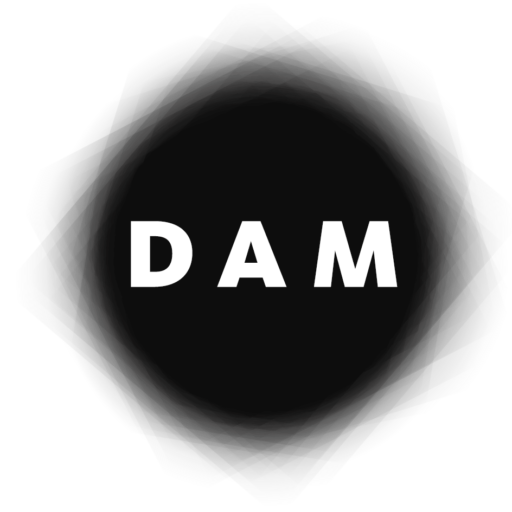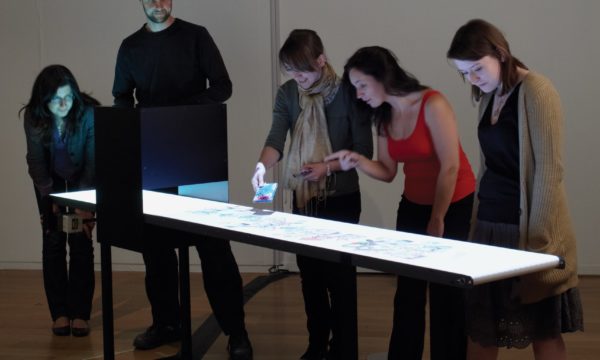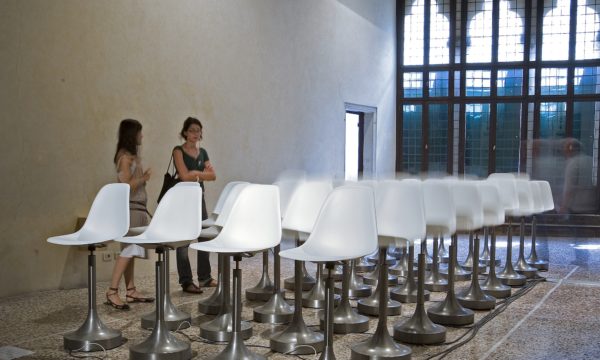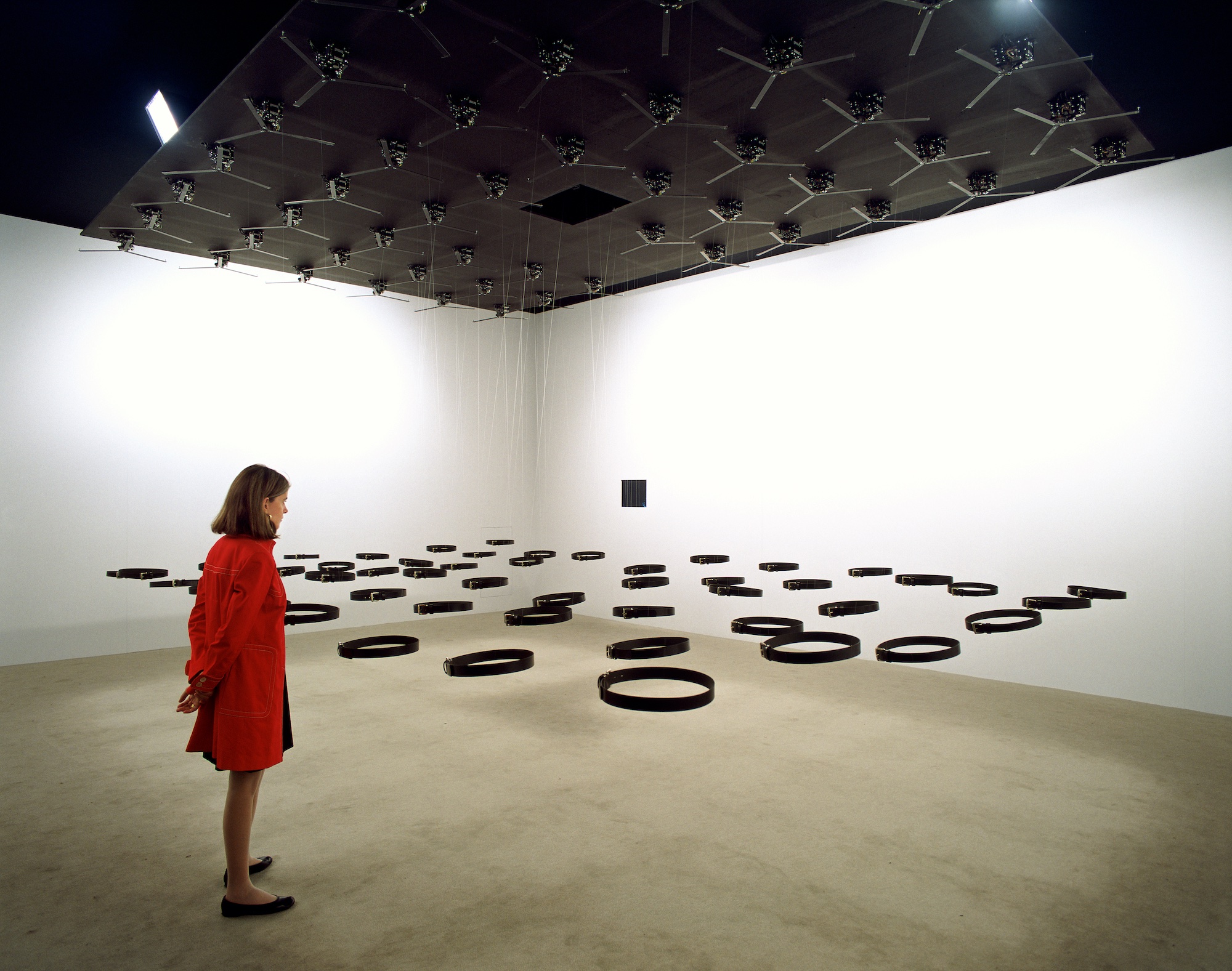Sphere PackingSubsculpture 15, 2013
“Sphere Packing” is a series of 3D-printed pieces designed to concentrate the entire musical production of a composer in a single dense multi-channel device. The size of each sphere is directly proportional to how prolific the composer was, for example the sphere for Johann Sebastian Bach has 48 cm diameter and holds 1100 loudspeakers playing simultaneously Bach’s 1100 different compositions, while the sphere for Hildegaard Von Bingen only has 11 cm diameter and 69 loudspeakers. The project presents at a glance the comparative production volume of many composers. As people are a couple metres away from a sphere they hear a quiet murmur of sounds, but as they approach and put their ear up close to individual speakers they can hone in on specific compositions.
Tape RecordersSubsculpture 14, 2011
Rows of motorised measuring tapes record the amount of time that visitors stay in the installation. As a computerised tracking system detects the presence of a person, the closest measuring tape starts to project upwards. When the tape reaches around 3 meters high it crashes and recoils back. Each hour, the system prints the total number of minutes spent by the sum of all visitors.
Voice ArraySubsculpture 13, 2011
As a participant speaks into an intercom, his or her voice is automatically translated into flashes of light and then the unique blinking pattern is stored as a loop in the first light of the array. Each new recording pushes all previous recordings one position down and gradually one can hear the cumulative sound of the 288 previous recordings. The voice that was pushed out of the array can then be heard by itself.
Please Empty Your PocketsSubsculpture 12, 2010
Please Empty your Pockets is an installation that consists of a conveyor belt with a scanner that records and accumulates everything that passes under it. The public may place any small object on the conveyor belt: once it passes under the scanner, the object reappears on the other side beside projected objects from the memory of the installation. As a real item is removed from the conveyor belt, it leaves behind a projected image of itself, which is then used to accompany future objects. The piece remembers up to 600,000 objects which are displayed beside new ones that are added to the installation.
MicrophonesSubsculpture 10, 2008
“Microphones” is an interactive installation featuring one or several 1939-vintage Shure microphones, placed on mic stands around the exhibition room at different heights. Each microphone has been modified so that inside its head is a tiny loudspeaker and a circuit board connected to a network of hidden control computers. When a public member speaks into a microphone, it records his or her voice and immediately plays back the voice of a previous participant, as an echo from the past.
WavefunctionSubsculpture 9, 2007
“Wavefunction” is a kinetic sculpture comprised of fifty to one hundred Charles and Ray Eames moulded chairs (designed in 1948) and placed in a regular array of rows, facing the entrance to the exhibition space. When someone approaches the work, a computerised surveillance system detects their presence and the closest chairs automatically begin to lift off the ground, creating the crest of a wave that then spreads over the whole room.
Standards and Double StandardsSubsculpture 3, 2004
“Standards and Double Standards” is an interactive installation that consists of 10 to 100 fastened belts that are suspended at waist height from stepper motors on the ceiling of the exhibition room. Controlled by a computerized tracking system, the belts rotate automatically to follow the public, turning their buckles slowly to face passers-by. When several people are in the room their presence affects the entire group of belts, creating chaotic patterns of interference. Non-linear behaviours emerge such as turbulence, eddies and relatively quiet regions.
More works
Shadow Object (2012-today)
Shadow Box (2006-today)
Subsculpture (2004-2014)
Relational Architecture (1997-present)







